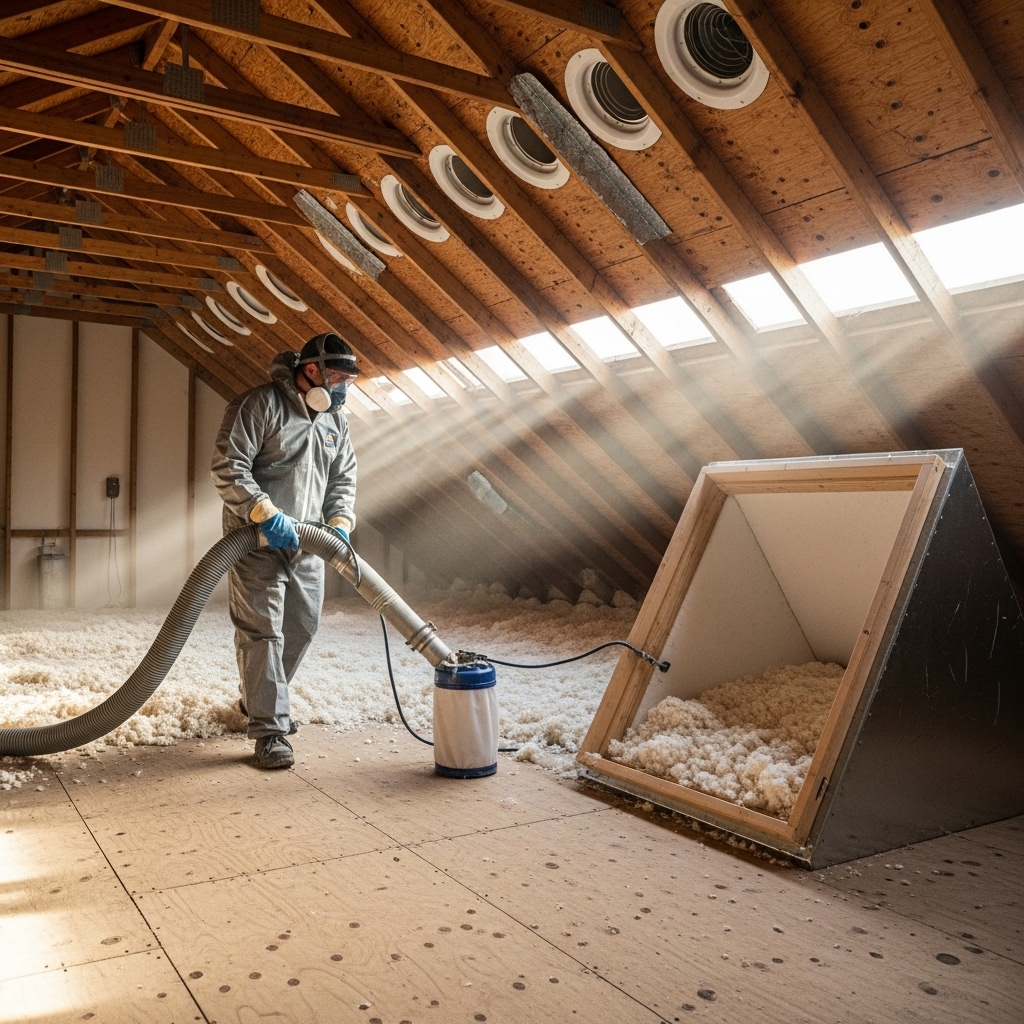If you have ever climbed into a Los Angeles attic on a summer afternoon, you know the heat can feel like it belongs to another climate entirely. That contrast between outdoor conditions and attic temperatures is why a thoughtful approach to attic insulation transforms the way a house lives. From coastal bungalows to hillside contemporaries, the right plan steadies indoor comfort, protects the roof assembly, and quiets your rooms without compromising the home’s character. Early in your research, it helps to see a clear path from assessment to completion, and one of the best ways to do that is by reviewing proven methods for insulation installation that reflect Los Angeles realities.
Why Attics Matter So Much in Los Angeles
Our region leans heavily on cooling for much of the year, yet nights can be surprisingly crisp, especially in the foothills and valleys. The attic is the largest thermal buffer most homes have, and it interacts with sunlight, shade, and airflow in complex ways. A roof that bakes under late-afternoon sun can push heat into the attic long after the beach breeze cools the street. Without careful air sealing and uniform insulation, that heat slips into living spaces, and your air conditioner fights a constant battle against it.
Insulation may be the star, but the supporting cast—air sealing, ventilation, and safe clearances around heat sources—decides how well the assembly performs. Think of the attic as a system where each detail influences the next. When it is tuned properly, you feel the difference room to room, not just at the thermostat.
Assessment: Reading the Clues Your Attic Offers
An honest assessment starts with the simple, obvious things. Is the existing insulation even, clean, and undisturbed? Are there dark outlines tracing framing members that suggest air movement? Do can lights, bath fans, or skylight shafts open pathways into the attic? Has storage compressed material near the hatch? Are ducts leaking or lying uncovered, soaking up heat like radiators? Each of these clues points to steps that anchor a successful project.
In older homes, you may find wiring that predates modern standards, evidence of previous modifications to framing, or forgotten chaseways that connect floors. In newer homes, you may discover a tight envelope that lacks coverage in awkward corners. Every finding shapes the plan. Insulation that looks sparse in one area may be covering a gap or a chase that needs sealing before new material is added. Taking the time to map the attic pays off later when the installation proceeds smoothly and produces noticeable comfort gains.
Air Sealing: The Best First Step
Before a single bag is opened, a quality installation closes the obvious leaks. Top plates along interior walls, electrical penetrations, and gaps at ducts and flues are prime locations. Sealing these spots stops conditioned air from escaping and keeps attic air from sneaking into living areas. This is also when crews create protective dams around the hatch and frame out walkways to mechanicals so future service doesn’t disturb the coverage.
One underestimated benefit of air sealing is how it calms indoor spaces. Drafts diminish, dust pathways shrink, and temperature transitions between rooms feel subtle instead of abrupt. When people talk about an attic upgrade making their home feel “quieter,” they’re often describing the combined effect of air sealing and well-placed insulation.
Choosing Materials for the Attic You Have
Open attics accept blown-in materials beautifully because they settle around odd angles and fill spaces that batts might miss. Fiberglass and cellulose both offer excellent coverage when installed to a consistent depth with care around eaves and fixtures. If you have knee walls or partial vaulted sections, batts can be custom-fitted to ensure contact on all six sides, while baffles maintain ventilation where the roof meets the sloped ceiling.
Some homes benefit from foam applied to the roof deck to create a conditioned attic. This approach can be advantageous when ductwork runs through tight spaces or when air sealing the ceiling plane is impractical. It requires specific planning for ventilation and fire safety and typically suits projects where the attic is part of a broader remodeling plan. The right choice arises from how you use the space, how you need it to perform, and how it fits your roof assembly.
Ventilation: Quiet and Invisible, Yet Essential
Ventilation keeps an attic dry and forgiving. Baffles at the eaves preserve airflow and prevent wind-washing that can reduce insulation performance along the edges. Exhaust through ridge or gable vents helps remove built-up heat and allows seasonal moisture to escape. In Los Angeles, where morning marine layers can linger along the coast and afternoon heat spikes inland, consistent airflow makes the difference between an attic that breathes and one that traps heat.
Bath fans deserve special attention. Any exhaust that terminates in the attic should be routed outdoors. This prevents humidity from collecting where it could affect the roof deck or degrade material over time. A tidy, well-ventilated attic is a stable attic, and stability translates directly into steady comfort downstairs.
Working Around Ducts, Lights, and Platforms
Attics hide a lot of infrastructure. Ducts may be routed inconsistently, junction boxes can be buried, and recessed lights might lack the proper rating for direct contact. A careful crew identifies these conditions, protects what needs protecting, and verifies that clearances are safe. If your ducts leak, sealing them before or during the insulation work compounds the benefits. Likewise, creating platforms for serviceable equipment keeps the insulation undisturbed for years to come.
Many Los Angeles homes have unique architectural features—barrel tile roofs with tight bays, low-slope roofs that pinch access at the eaves, or skylight wells that complicate coverage. Patience and planning overcome these obstacles. The goal is an even, uninterrupted layer of insulation and an air barrier that stays intact even when other trades visit the attic later.
Comfort You Can Feel, Not Just Measure
After a proper install, the change indoors feels surprisingly holistic. Rooms that once swung several degrees during the day now hold steady. Late-afternoon sun through west-facing windows is still bright, but the heat no longer lingers hours after sunset. Early mornings feel less chilly because the home retains the previous day’s gentle warmth. The thermostat becomes a tool you touch less often, and the soundscape inside softens a bit as outdoor noise fades into the background.
Homeowners sometimes think these outcomes are the result of a big, expensive overhaul. In truth, they come from well-executed fundamentals: sealing the attic plane, ensuring even coverage, and protecting airflow. Those fundamentals are what make your upgrade durable and satisfying.
Planning, Scheduling, and Living Through the Work
Most attic projects are structured to minimize disruption. Crews protect flooring and walls along access routes, use negative air where appropriate, and stage materials for efficient loading. If removal is part of the plan, it is contained and cleaned up before new material arrives. Communication is key; you should know which rooms will be affected each day and what the plan is for equipment access.
The best sign that things are going right is when no detail feels rushed. Baffles are neatly installed, dams are square and secure, coverage is consistent at the edges, and the hatch seals tightly when the job is done. Little touches like labeled photos of hidden penetrations sealed and before-and-after shots offer peace of mind and a clear record of the work.
Neighborhood Nuances and Local Wisdom
From South Pasadena’s leafy streets to Venice’s bright bungalows, each neighborhood teaches a lesson. Homes near canyons experience gusty winds that can push outdoor air through tiny cracks if the ceiling plane is leaky. Houses under flight paths benefit from added acoustic attention. Properties near the coast appreciate materials that stay stable with morning moisture and afternoon sun. Tuning the plan to your neighborhood’s habits is a subtle but important way to get the most from your attic upgrade.
Even the direction your roof faces matters. South and west planes capture a day’s worth of heat; north and east planes see more shade. Balancing coverage and airflow across the entire attic helps prevent hot and cold spots in the rooms below, especially in two-story homes where the upper floor bears the brunt of solar gain.
Frequently Asked Questions
How do I decide between blown-in insulation and batts for my attic?
Think about access and geometry. If your attic has lots of obstacles, odd angles, or tight bays, blown-in material tends to deliver more uniform coverage. If you have open bays and want to pair the work with strategic air sealing in visible locations, batts can be fitted carefully to achieve full contact. In many homes, a combination is used to suit different zones.
Will attic insulation help with rooms that overheat in the afternoon?
Yes. By slowing heat flow from the roof into the living space and closing air leaks that connect the attic to rooms below, afternoon spikes are tamed. The effect is especially noticeable in west-facing rooms and upper floors. Proper ventilation enhances the result by allowing residual heat to escape the attic more readily.
Is there a concern about moisture in Los Angeles attics?
While our climate is generally dry, moisture still moves through buildings. Bath fans, unvented kitchen exhausts, and morning marine layers can introduce humidity. Ensuring that fans vent outdoors and that eave baffles preserve airflow protects the roof deck and helps insulation maintain performance over time.
Do I need to remove old insulation?
If the existing material is clean, dry, and evenly distributed, it may be possible to add new material on top. If there is evidence of contamination, damage, or major gaps that mask air leaks, removal and remediation produce a cleaner, healthier, and more effective assembly. An inspection will determine the right path.
How long does a typical attic job take?
Timelines depend on preparation needs, access, and whether removal is included. Most projects are scheduled to minimize disruption, with clear communication about the sequence of work so you know what to expect each day.
Will the work make a mess inside my home?
Professional crews protect floors and walls, use containment, and clean thoroughly at the end of each day. The goal is a tidy process with a clean attic and a home that looks untouched except for the improved comfort you feel.
If you are ready to upgrade your home’s comfort and want to see how a project flows from evaluation to completion, connect with local experts who specialize in Los Angeles attics. A thoughtful plan, tailored to your structure and neighborhood, makes all the difference. Begin by reviewing trusted approaches to insulation installation, and then schedule a conversation to map out the steps for your home. When it’s done right, the change is more than noticeable—it’s the new normal you’ll enjoy every day.

